

Ben Zachariah
CarExpert's top five EV reviews of 2025
2 Hours Ago
Ford's luxury brand Lincoln has given us a hint of what its future electric vehicles will look like with the Star concept.

News Editor
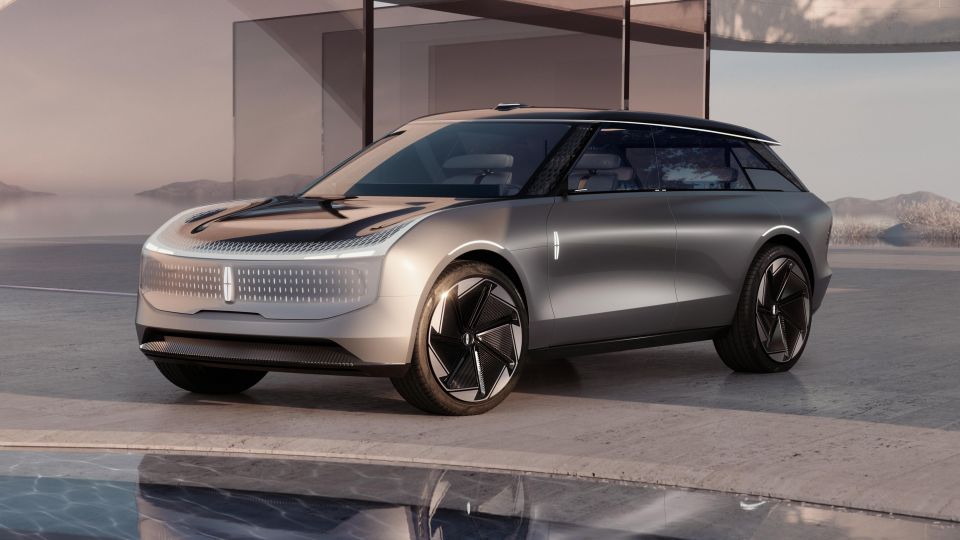

News Editor
Ford’s luxury brand Lincoln has previewed its electric future with a battery-powered crossover concept.
Named the Star – Lincoln’s logo being a stylised star – it’s understood to be roughly the same size as the Ford Explorer-based Aviator albeit offering only two rows of seats.
That puts it in the ballpark of the Cadillac Lyriq, Audi e-tron and BMW iX.
Lincoln says the Star “hints” at the design language for its future electric vehicles, of which it’ll introduce three by 2025.
A fourth will follow in 2026, and Lincoln expects more than half of its global volume to be EVs by mid-decade.
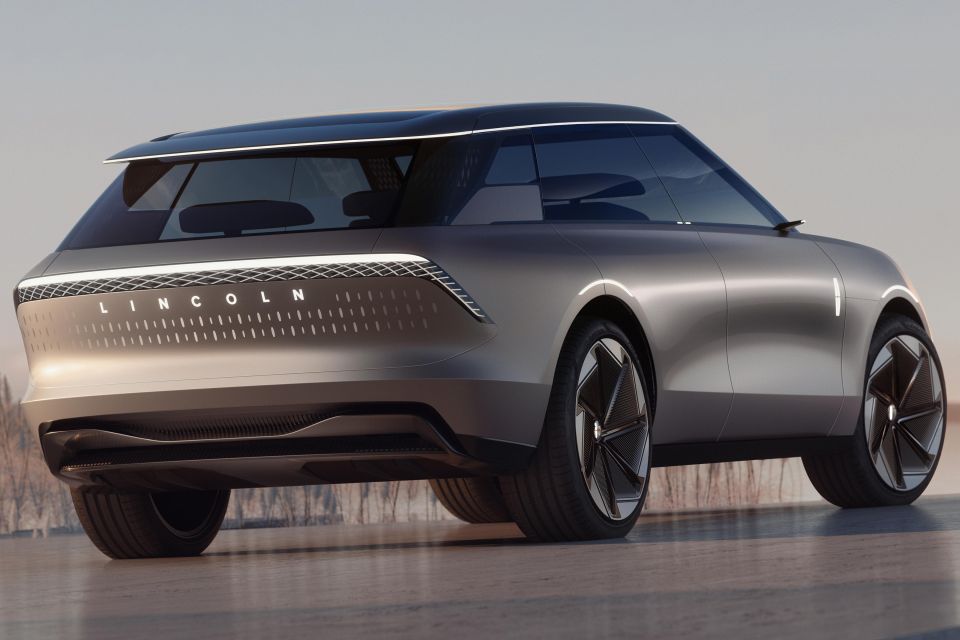
The brand currently sells just four models in its home market of the US. Two of these – the Aviator and Corsair – are available with plug-in hybrid powertrains.
The Star concept rides on Ford’s new flexible rear/all-wheel drive electric vehicle architecture.
Ford confirmed last year it was rolling out two new EV architectures: one for cars and smaller SUVs, one for larger SUVs and pickup trucks.
It hasn’t provided any details on electric motor outputs or battery capacities, however.
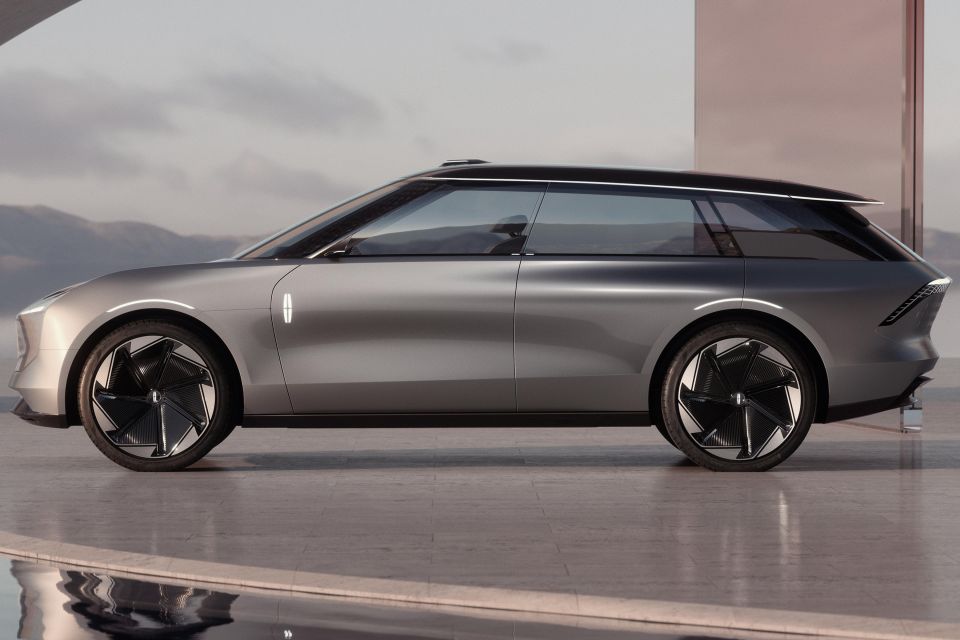
The tapered lines bear some resemblance to today’s Aviator, though the styling is an evolution of Lincoln’s “Quiet Flight DNA” with a unique front end that’ll feature on future EVs.
There’s a large, illuminated badge that “lights up like a jewel” and a closed-off grille, as well as crystalline lighting elements.
The concept also features concept car flourishes like coach doors and a bonnet that lifts up and a bumper that slides out to reveal a load space.
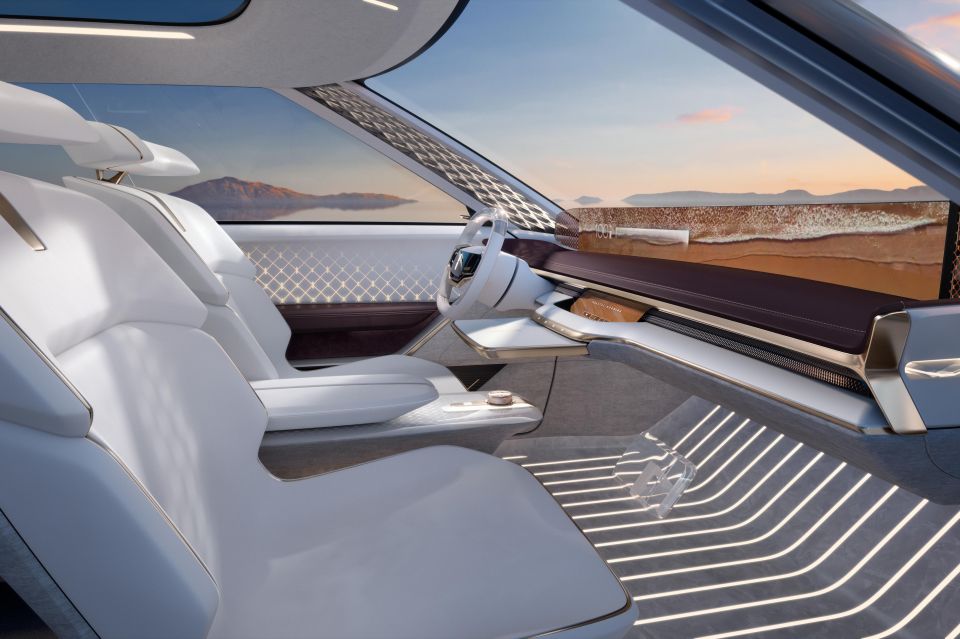
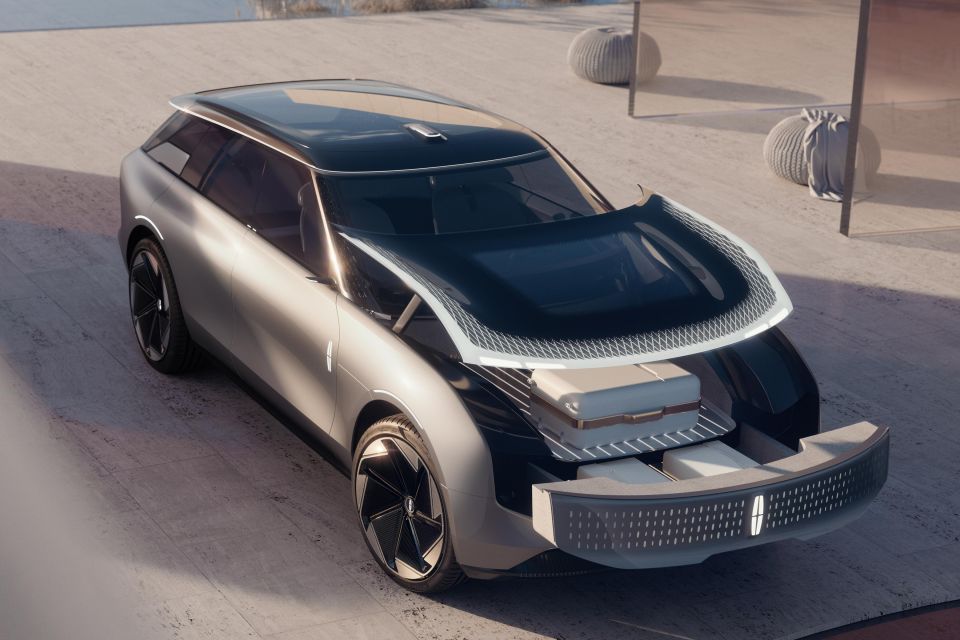
The bonnet also features electro-chromatic glass that be changed from opaque to transparent, allowing light to stream into both the load space and the first-row footwells.
The concept features the new Lincoln Intelligence System, a technology suite featuring vehicle-to-vehicle capabilities and next-generation driver assist features like Help Me See and Park For Me.
Lincoln has been pushing a “quiet luxury” theme with its vehicles for some time, eschewing sporty design themes found in some other luxury brands.
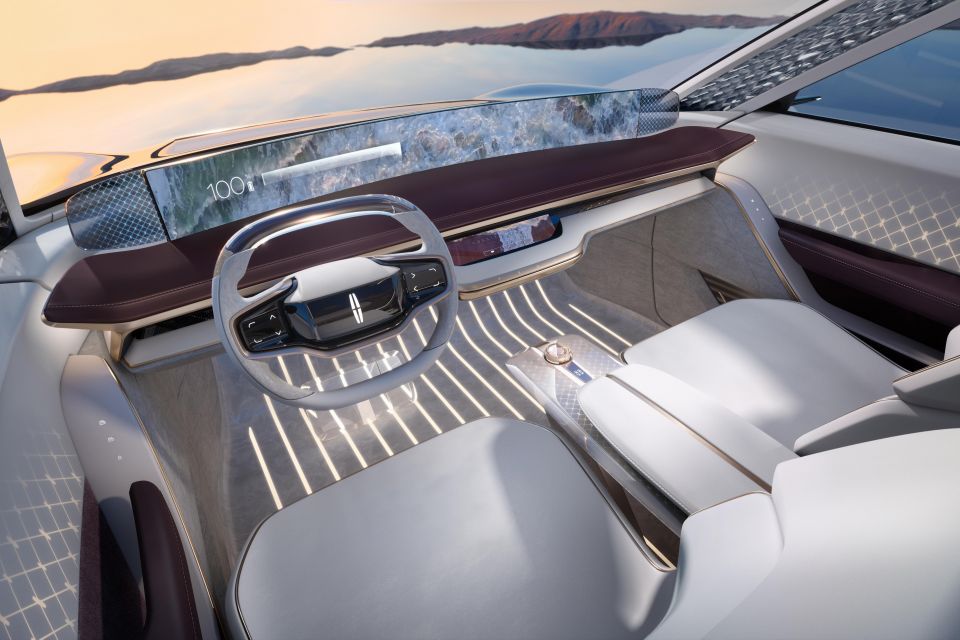
The interior is therefore bathed in soft colours and light. 3D-printed metal latticework on the A- and D-pillars brings natural light into the cabin, as does a full skylight.
As in the new Chinese-market Lincoln Zephyr, there’s a “coast-to-coast” horizontal display stretching across the dashboard.
A wing-shaped floating instrument panel is said to be inspired by aircraft ailerons.
Materials include leather and chrome alternatives, as well as “several unique finishes”, in contrast with the leather-swathed and often wood-lined cabins of today’s Lincolns.
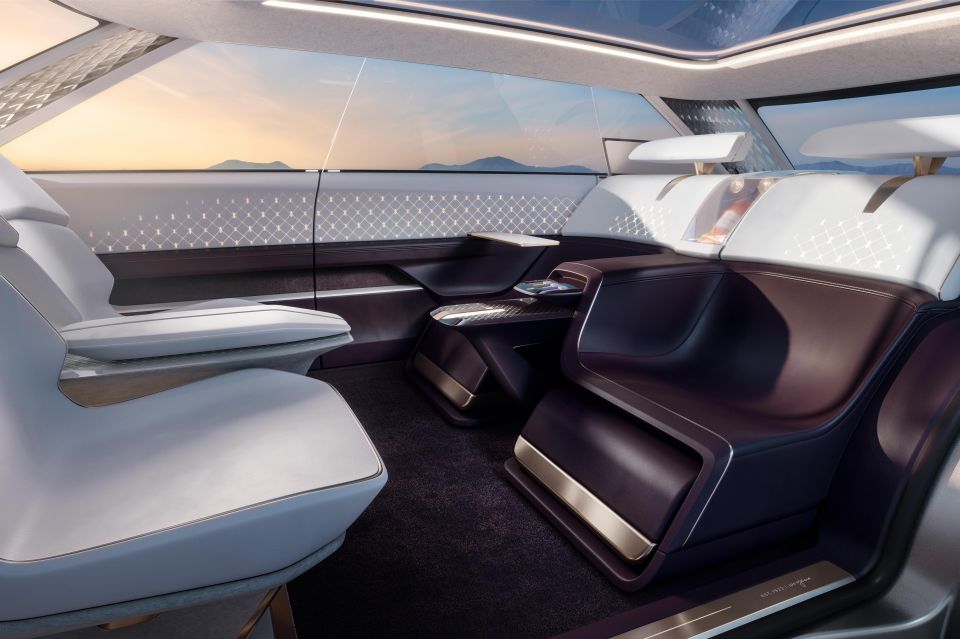
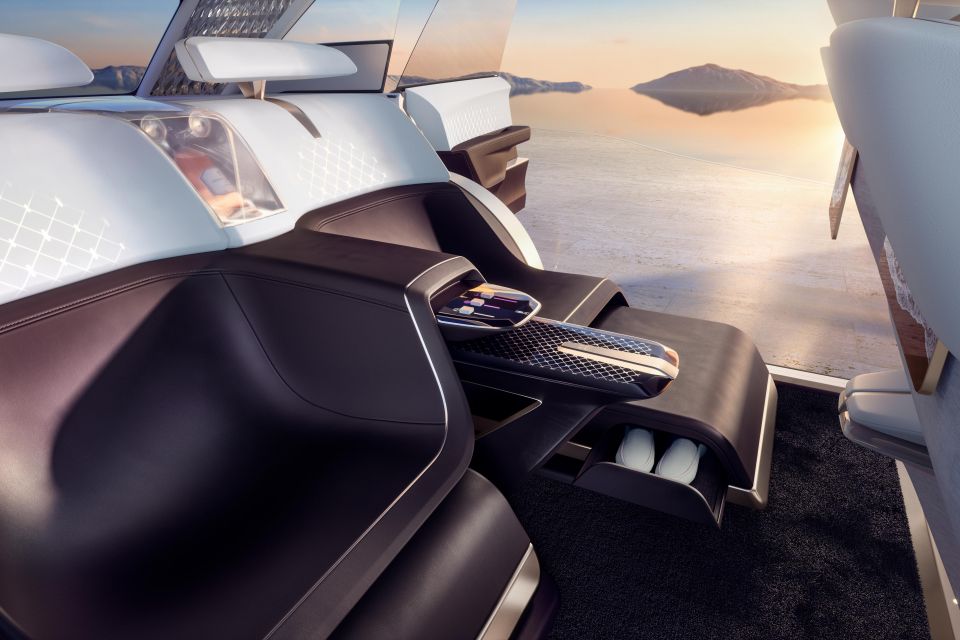
Clever touches include Lincoln Attaché, a “digital briefcase concept” featuring a hidden compartment in the rear coach door where you can securely stow devices and charge them wirelessly, and a glass beverage chiller between the two rear seats.
The rear seats feature lounge leg rests and can be reclined.
The Star concept also features three “rejuvenation moods” that use a combination of sound, scent, video and lighting.
Coastal Morning spritzes a sea mist fragrance, shines soft lighting and plays gentle ocean sounds, while Evening Chill plays night sky video with a “calming night soundtrack” and an evergreen fragrance.
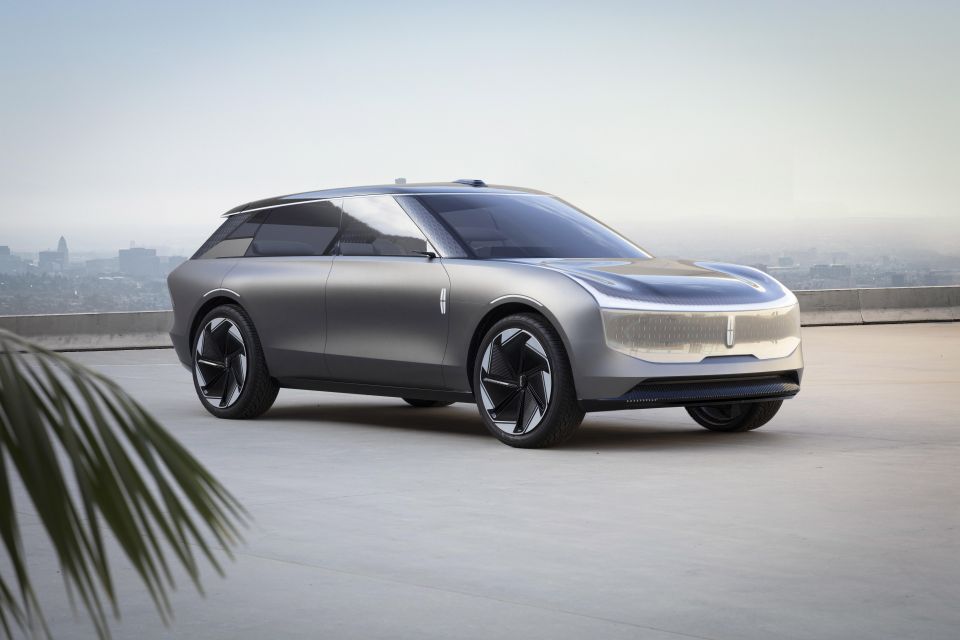
Mindful Vitality plays “invigorating, upbeat audio” and “dynamic abstract artwork”, while shining soft, glowing lighting and deploying a flowery fragrance in the cabin.
Lincoln says in the future these rejuvenation moods could be updated and personalised by users.
“The Lincoln Star is a study of experiences and themes that push the boundaries of Lincoln design – and it’s just the start,” said chief design officer Anthony Lo, chief design officer.
“Electrification is removing many traditional vehicle design constraints, allowing us to reimagine what a vehicle can be.”
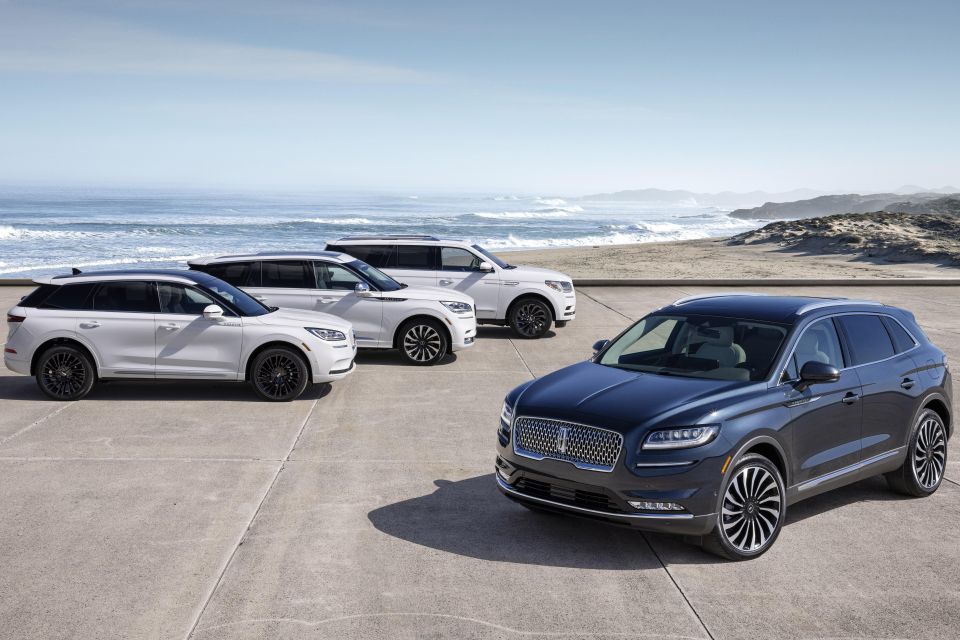
Lincoln has an SUV-only lineup in North America, with the mid-sized MKZ and large Continental sedans having been discontinued in 2020.
That leaves the Ford Escape-derived Corsair, Edge/Endura-based Nautilus, Explorer-based Aviator and Expedition-based Navigator.
However, the sedan lives on in China, where Lincoln has just introduced a new mid-sized sedan related to the China-only fifth-generation Ford Mondeo.
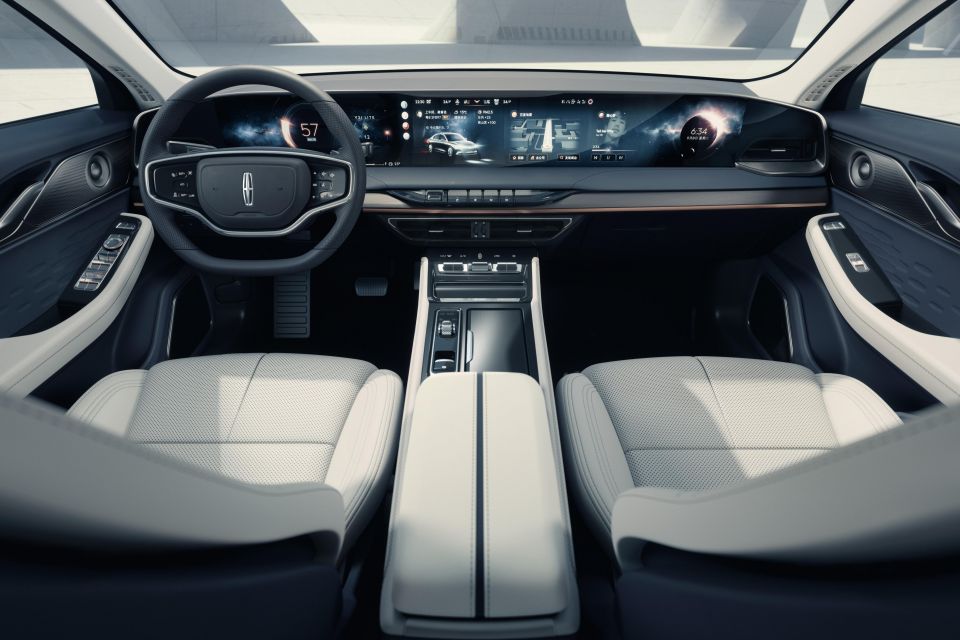
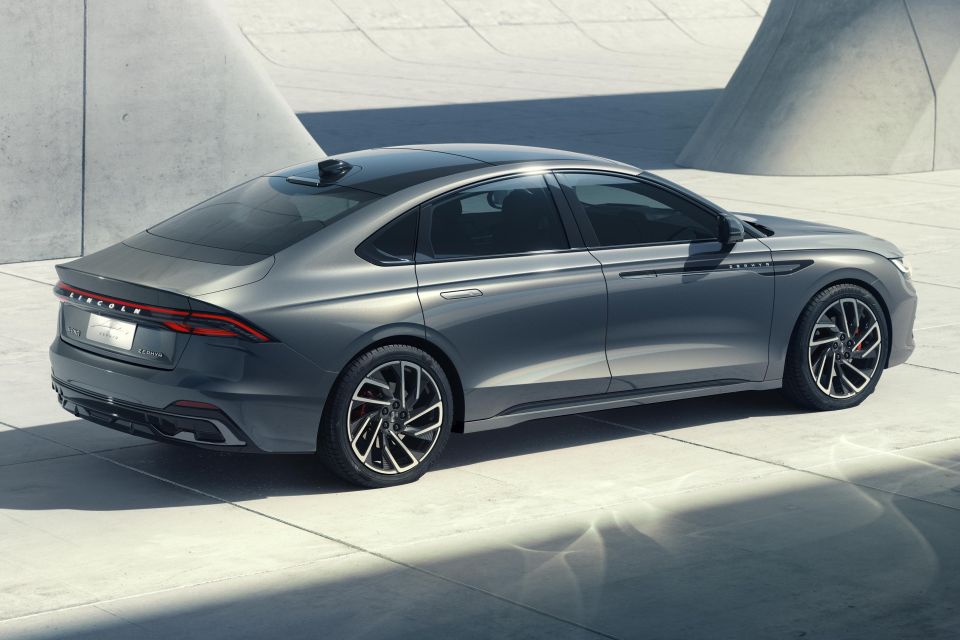
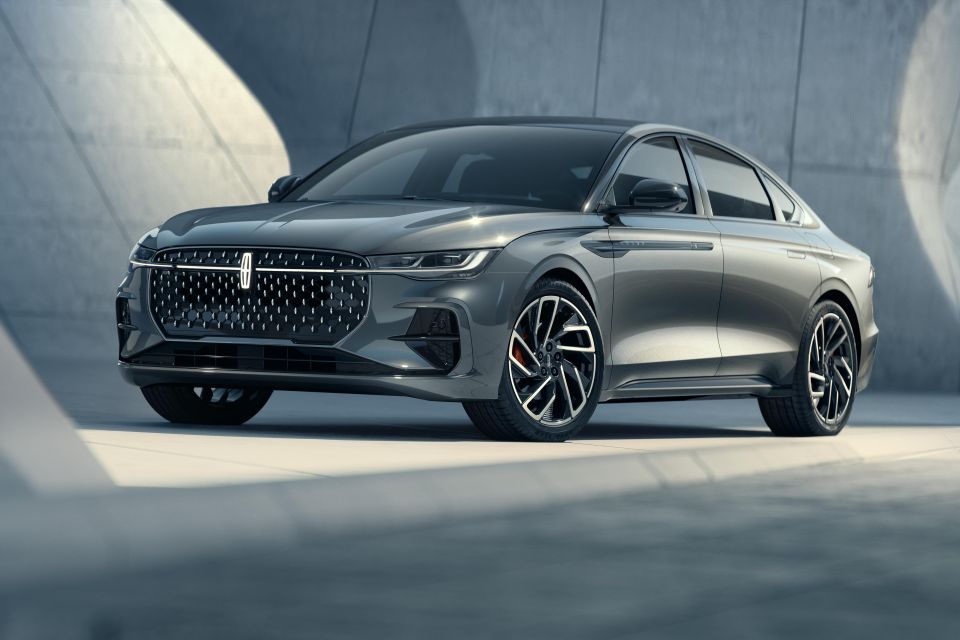
Both these vehicles are produced by the Changan Ford joint venture.
Lincoln’s new sedan wears the Zephyr nameplate, briefly used on the first-generation MKZ and more famously used on entry-level (if still V12-powered) Lincolns sold between 1936 and 1942.
Last year, Lincoln sold more cars in China than in the US for the first time ever. It only entered the Chinese market in 2014.
William Stopford is an automotive journalist with a passion for mainstream cars, automotive history and overseas auto markets.


Ben Zachariah
2 Hours Ago
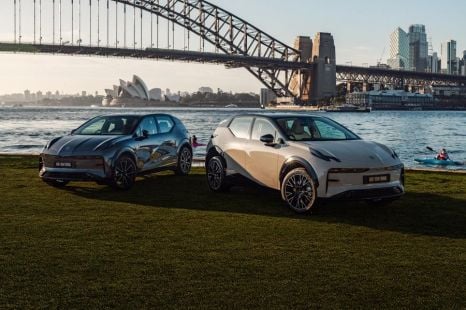

Max Davies
2 Hours Ago


Derek Fung
3 Hours Ago
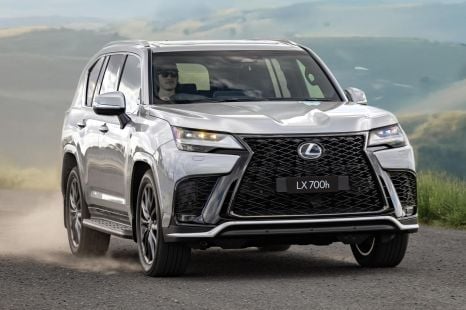

Derek Fung
3 Hours Ago
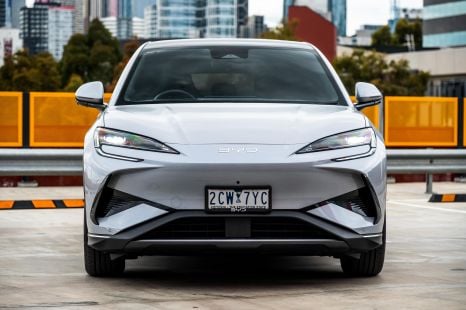

James Wong
10 Hours Ago


Damion Smy
18 Hours Ago